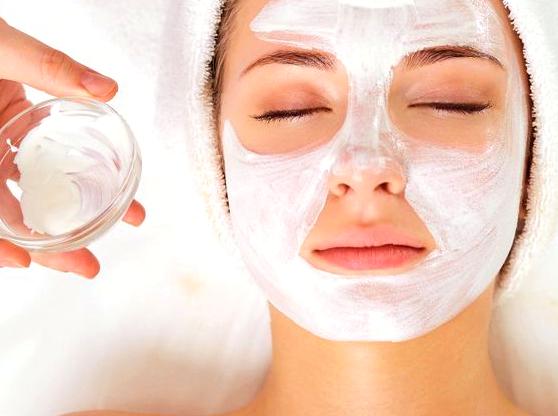Skincare routines are essential for maintaining healthy, glowing skin and preventing a variety of skin issues. This article will guide you through the fundamental steps and provide insights into crafting an effective skincare regimen. Whether you’re a newbie or looking to refine your existing routine, understanding the basics of skincare will empower you to make informed choices for your skin type. From cleansing to moisturizing, we’ll cover every critical aspect of skincare routines, helping you make your skin care journey both manageable and enlightening.

Understanding Your Skin Type
Before diving into skincare routines, it’s imperative to identify your skin type. Knowing whether you have oily, dry, combination, or sensitive skin will determine the products you choose and how you approach your skincare regimen. Typically, skin types can be categorized into the following:
- Oily Skin: Characterized by excess oil, prone to acne and shiny appearance.
- Dry Skin: Lacks moisture, may feel tight or flaky, and can be prone to irritation.
- Combination Skin: Exhibits both oily and dry areas, often oily in the T-zone and dry on the cheeks.
- Sensitive Skin: Easily irritated by products, may experience redness or allergic reactions.
Once you’ve identified your skin type, you can tailor your skincare routine to meet its specific needs. For example, if you have oily skin, you might want to opt for lightweight, oil-free products. Understanding your skin type not only helps in selecting products but also avoids aggravating existing skin problems.

Key Steps in a Skincare Routine
Every effective skincare routine typically includes several key steps, each serving a vital purpose in maintaining skin health. Here are the fundamental steps you should incorporate:
- Cleansing: Begin with a gentle cleanser to remove dirt, oil, and makeup. Cleansing prepares your skin for the next steps.
- Toning: A toner can help to tighten pores, remove residual impurities, and balance the skin’s pH.
- Exfoliating: Exfoliation removes dead skin cells, promoting cell turnover. However, this step only needs to be done a couple of times a week to avoid irritation.
- Moisturizing: Regardless of your skin type, moisturizing is crucial to keep your skin hydrated and protect it from environmental stressors.
- Sun Protection: Using sunscreen daily is one of the most important steps to prevent sun damage and premature aging in your skin.
Each of these steps plays a critical role in your overall skincare regimen. Skipping even one could result in ineffective outcomes. Incorporating these steps consistently will benefit your skin’s health in both the short and long term.
Choosing the Right Products
The effectiveness of a skincare routine largely depends on the products selected. Look for quality formulations that suit your skin type and address your primary concerns, such as acne, aging, or pigmentation. In addition, pay attention to ingredients: avoid harmful additives like parabens and sulfates while opting for nourishing ingredients, such as hyaluronic acid, antioxidants, and natural oils.
When trying a new product, it’s prudent to perform a patch test to prevent adverse reactions. Introducing products gradually allows you to identify what works best without overwhelming your skin. Keep an eye out for reputable brands and, if possible, seek recommendations from skincare professionals to help you navigate the vast market of skincare products.

Maintenance and Adaptation
Skincare is not a one-size-fits-all approach; it requires maintenance and occasional adjustments. Factors such as weather changes, hormonal shifts, and age can affect your skin’s requirements over time. Regularly reassessing your skincare regimen allows you to adapt and respond to these changes.
Keep a skincare journal to track your skin’s reactions to products and any changes you notice. This practice helps you fine-tune your routine over time. Additionally, indulge in professional skincare treatments periodically, such as facials or chemical peels, to keep your skin healthy and refreshed.

Conclusion
Establishing a solid skincare routine is paramount for achieving healthy, radiant skin. By understanding your skin type, incorporating key routine steps, and selecting the right products, you set the foundation for effective skincare. Remember that consistency is key, and don’t hesitate to adapt your routine as your skin evolves. Whether you’re starting from scratch or refining your existing regimen, embracing the basics of skincare can lead to significant improvements over time.
FAQs
Exfoliation should typically be done 1-3 times a week, depending on your skin type and the strength of the exfoliant. Over-exfoliating can irritate your skin.
2. Is it necessary to use a toner?
While toners can improve skin texture and remove residual impurities, they are not essential for everyone. If you have concerns about oily skin or enlarged pores, a toner can be beneficial.
3. Can I skip sunscreen on cloudy days?
No, UV rays can penetrate clouds, so applying sunscreen daily, regardless of the weather, is crucial for protecting your skin from harm.
4. How long will it take to see results from my skincare routine?
Results often vary depending on your routine and skin concerns, but you should start seeing initial improvements within 4-6 weeks of consistent use.
5. Should I use different products in the morning and evening?
Yes, it can be beneficial to have a different routine for morning and evening. In the morning, focus on sun protection and hydration, while in the evening, you can include treatments that address specific concerns.
